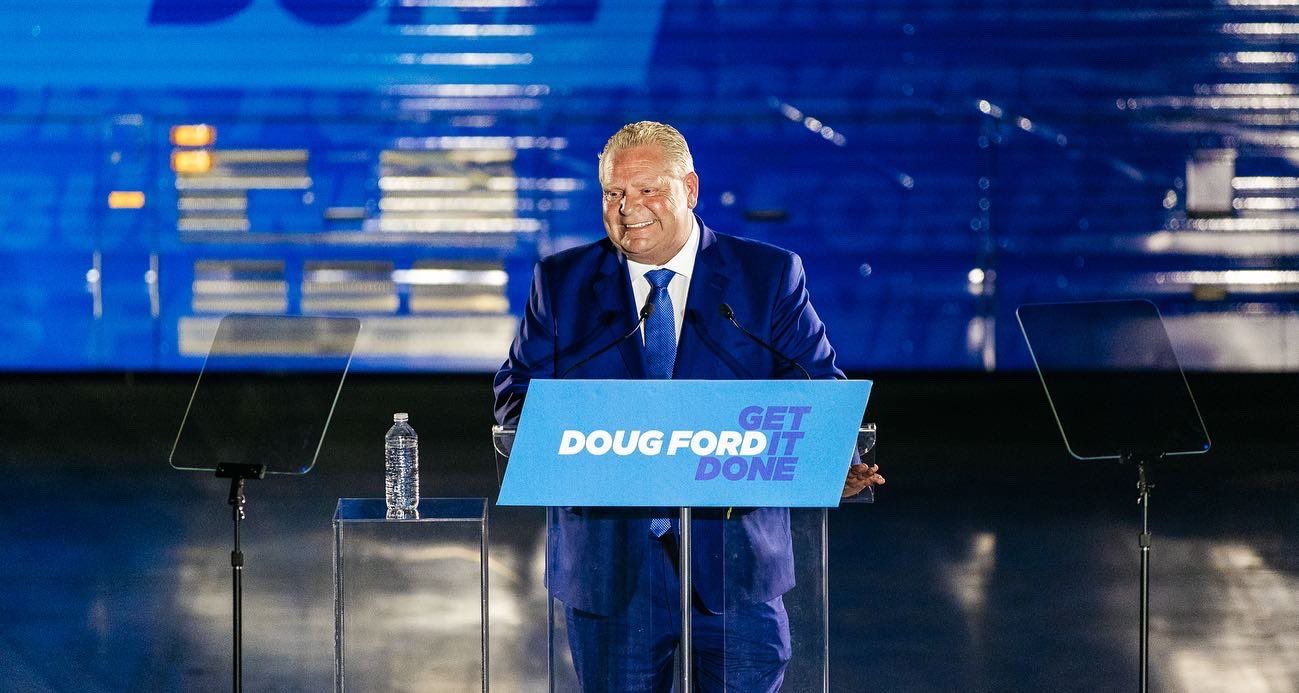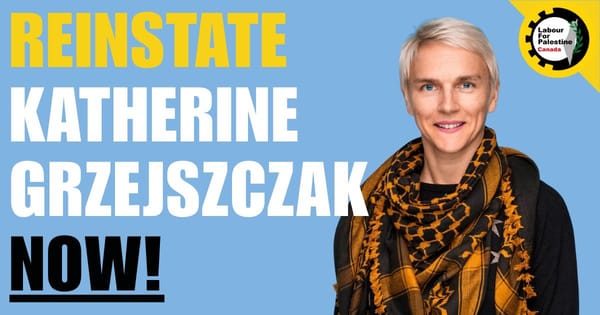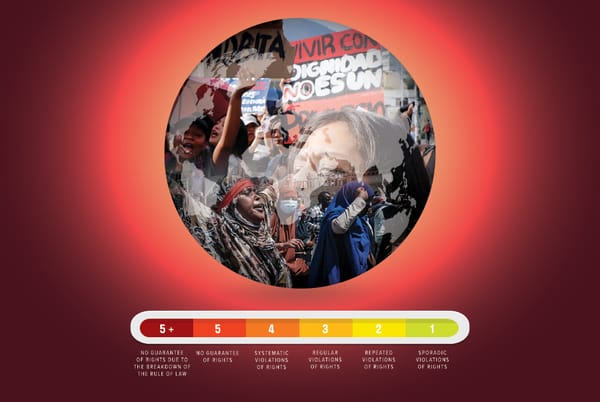
Before turning to this week’s rundown of the Ontario budget, I wanted to provide a quick update on the federal government’s paid sick leave policy for workers in federally-regulated industries.
The Budget Implementation Act, or Bill C-19, a huge piece of omnibus legislation that will enact many of the federal government’s 2022 budget commitments, went through first reading last week. Contained within it are a couple of modifications to Bill C-3, the legislation from November that granted federally-regulated workers paid sick days. As I wrote at the time, the “accrual” model that Bill C-3 set out for the medical leave model — whereby workers earn a day of paid sick leave per month of employment up to a maximum of 10 days — introduced design flaws into the legislation.
Now, after holding up the implementation of paid sick days for months in regulatory consultations, the Liberals are again chipping away at their own policy. Bill C-19 introduces an “application” whereby paid sick days — when they finally come into force — will only be available to workers employed at firms with a staff of 100 or more. The policy will be extended to all workers at some later, unspecified date.
This is an unequivocal backtrack. There was never any mention of limiting eligibility to workers in large firms. Sickness doesn’t care how big the firm in which you work happens to be. Moreover, the typical worker who will find themselves without access to paid sick days as a result of this legislative revision will be someone working in interprovincial trucking, the federally-regulated sector containing the vast majority of small firms. But I wouldn’t expect to hear any cries of outrage from the so-called “freedom convoy” and its lingering diehards.
Now to Ontario Premier Doug Ford and the Progressive Conservative government’s budget in the province…
Ford’s government released their 2022 budget on April 28, just days ahead of the legislature being dissolved for the upcoming election. For lack of time before the campaigning begins, the Conservatives’ spending plan will not be debated or voted on by MPPs. In this sense, we aren’t dealing with a typical budget. Rather, as John Rieti at the CBC puts it, Budget 2022 is more like a “costed election platform” — something that Ford and Co. didn’t bother to produce during their 2018 election campaign.
As was the case ahead of the federal budget, government finances have improved considerably in Ontario owing to a better than expected post-lockdown recovery. The Financial Accountability Office (FAO) has projected the province’s deficit for 2021-22 to be $4.5 billion below the government’s forecast in its third-quarter release earlier this year.
Overall, Ontario’s economy is in better shape than expected a year ago, in spite of the sand that the Ford government has thrown in the gears of the recovery. While previously on track to balance the budget by next year, the government is now pushing this off until 2026-27. However, this is no indication of a switch to renewed stimulus spending or a robust plan to address social needs.
The province currently has the smallest deficit it has had in 14 years, thanks in part to nearly $145 billion in federal aid during the pandemic. As well, provincial revenues have risen sharply compared to the government’s previous projections.
The province’s debt is shrinking relative to the size of the economy, as are interest payments as a share of revenue. Real GDP growth is projected to be 3.7 per cent in 2022 before falling to just more than 3 per cent and 2 per cent in 2024 and 2025, respectively. This is a time to spend, to address the many holes in the social safety net exposed by the pandemic, which were particularly gaping in Ontario, and to provide much needed public support to the province’s workforce.
Instead, the Conservative budget, despite much fanfare from the government about “historic investments” in health care and education, is a predictably astere document, focused much more on tax cuts and providing aid to developers than on strengthening Ontario’s crumbling social infrastructure.
Last month, the FAO estimated that current per person program spending in Ontario is roughly 2 per cent lower than it was pre-pandemic, and continues to be the lowest in the country. Moreover, the province takes in the second lowest total revenue per capita, just ahead of Alberta. Ontario receives low per capita transfer payments from the federal government, but only because it has a much greater ability to generate tax revenue than other provinces and territories. But an ability to tax the wealthy isn’t the same as actually doing it, and working-class Ontarians pay the price.
The so-called “Plan to Build” raises overall spending by more than $11 billion in 2022-23, much of it directed at infrastructure, particularly highway and bridge construction. The government is proposing roughly $158 billion be spent on infrastructure over the next decade, with $21.5 billion for highway construction in that timeframe. This spending would see Highway 401 widened from Pickering to Oshawa, a bridge built over the Welland Canal, Highway 413 construction and a 21 kilometre stretch of highway built in Northern Ontario through Timmins. No doubt a good deal of this proposed spending is aimed at gathering votes in the car-dependent suburbs around the Greater Toronto Area and other rural areas of the province.
Spending largesse doesn’t extend to public services, however. As Randy Robinson at the Canadian Centre for Policy Alternatives (CCPA) writes, the Conservatives have based their spending plans for public services on “normal times,” i.e. they don’t take into account the impact of current levels of inflation. Operating costs borne by the public sector will likely be much higher because of elevated inflation — Ford’s funding simply won’t keep up.
As Mitchell Thomspon reports at Press Progress, the budget also contains hidden education funding cuts of roughly $1.3 billion. The budget attempts to pass the buck by blaming the short-fall on lower levels of fundraising on the part of school boards. Robinson at CCPA also finds that the Conservatives have moved money around to make federal child care funding appear as though it’s education funding, further inflating the actual dollar amount allocated for primary and secondary education.
As he writes: “At first glance, an average spending hike of 5.9% a year over the next three years looks like a significant jump. But there’s a catch. Included in that amount is $6.8 billion in federal money for the implementation of the Ontario Early Learning and Child Care Agreement. This money is for child care, not school operations. Take this amount out of the education budget and the net result is that, in a time of high inflation, education is almost certainly seeing a cut in real funding per student.”
And this is, of course, in the context of an education sector that has been underfunded for years, with ballooning class sizes and growing maintenance backlogs.
When it comes to issues of affordability and “working for workers,” as the government puts it, the budget is mostly a mishmash of gimmicks, tax credits, and training initiatives. The budget plans to raise the Low-income Individuals and Families (LIFT) tax credit eligibility from $38,000 to $50,000, and cut the gas tax by 5.7 cents per litre and the fuel tax by 5.3 cents per litre for six months, beginning July 1.
This government, like right-wing governments around the world, prefers tax credits and cuts to active public support for workers, despite this approach providing far fewer net benefits. Then there is, of course, the election gimmick of scraping licence plate renewals, estimated to have cost the government $1.8 billion this year — a “tax break” that does nothing for those who depend on public transit.
The NDP meanwhile has promised in its electoral platform to cover mental health care through the public insurance system and to raise Ontario Works and Ontario Disability Support Program rates by 20 per cent — two income support programs that have languished under Ford and been further eaten away at by record inflation in the past months.
Those on fixed incomes, as well as many workers participating in the labour force, have seen income losses amid elevated inflation. Meanwhile, Bill 124 continues to undermine public sector workers’ collective bargaining rights and force wage increases down to 1 per cent annually for many essential (overwhelmingly women) workers in healthcare, education and other public workplaces.
The Ford government’s recent posturing and minor tinkering have done little to improve the situation of workers in Ontario. Budget 2022, as either a “budget” or as a series of “election ploys,” conditions that inaction. Workers shouldn’t be fooled. Doug Ford continues to be an enemy of workers.







